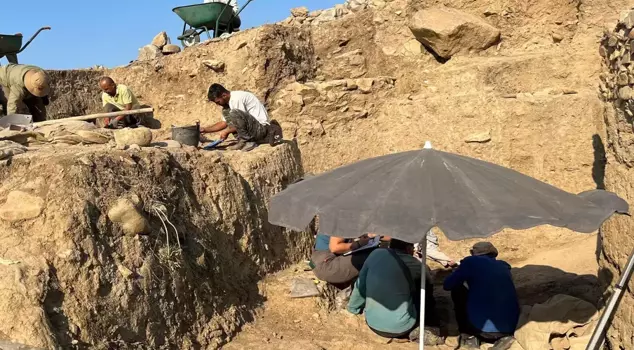
25.07.2025 20:56
The archaeological excavations that have been ongoing for 15 years in the Uğurlu-Zeytinlik settlement located on Gökçeada, Turkey's largest island, have revealed that it is the first village settlement in the region based on a food economy reliant on agriculture and animal husbandry among the Aegean islands.
```html
In Gökçeada, the largest island of Turkey and one of the North Aegean islands, archaeological excavation works in the Uğurlu-Zeytinlik settlement have been ongoing for 15 years with the permission and financial support of the Ministry of Culture and Tourism and the General Directorate of Cultural Heritage and Museums.
THE FIRST VILLAGE SETTLEMENT BASED ON AGRICULTURE AND ANIMAL HUSBANDRY
As a result of the excavation works, it was revealed that the region is the first village settlement based on food economy, agriculture, and animal husbandry among the Aegean islands.
HOSTING THE OLDEST EVIDENCE OF URBANISM
Additionally, the archaeological studies revealed that it is a settlement that hosts the earliest evidence of urbanism, as pottery production, metallurgy, and monumental architecture emerged earliest among the Aegean islands.
KEY SETTLEMENT LOCATION
The Uğurlu-Zeytinlik Mound, known as the earliest Neolithic settlement in the Eastern Aegean islands, will contribute to the question of how Neolithic lifestyles began in Europe and will serve as a key settlement that reveals the relationships between the Aegean Islands, Anatolia, and the Balkans during the Neolithic and Chalcolithic periods.
EXISTENCE OF 6 CULTURAL LEVELS REVEALED
The excavations in the settlement revealed the existence of 6 cultural levels. The earliest VI. Cultural Level dates back to the Pottery-Free Neolithic Age between 6800-6600 BC. The first pottery appeared in the settlement around 6600 BC. The V. Cultural Level is dated between 6500-5900 BC, while the IV. Cultural Level, which is the last phase of the Neolithic Age, is dated between 5900-5500 BC. The III. Cultural Level reflects the transition period between the Neolithic and Chalcolithic Ages, dating between 5500-4900 BC. This cultural level, which shows significant growth in the settlement, presents the oldest evidence of urbanism. The last cultural level in the settlement, the II. Cultural Level, is dated between 4500-4300 BC.
IDENTIFIED IN 1998
The mound, first identified in 1998, has been excavated by a team led by Prof. Dr. Burçin Erdoğu on behalf of Akdeniz University since 2009, with the permissions of the Ministry of Culture and Tourism and the General Directorate of Cultural Heritage and Museums.
```